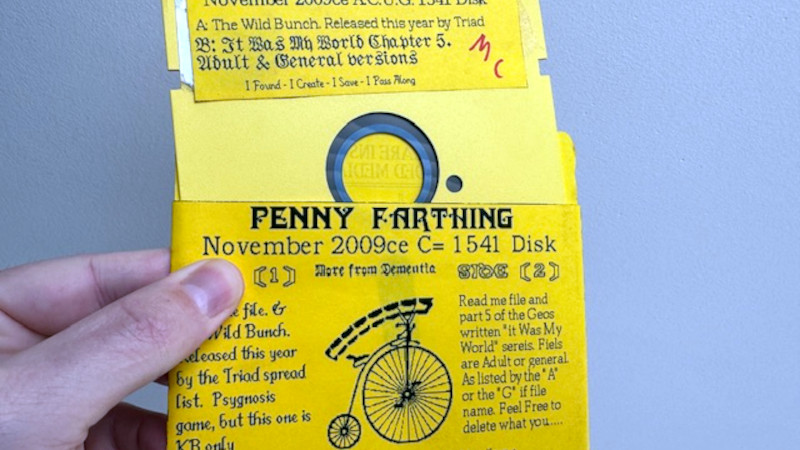The world of computer enthusiasts has over time generated many subcultures and fandoms, each of which has in turn spawned its own media. [Intric8] has shared the tale of his falling down a rabbit hole as he traced one of them, a particularly esoteric disk magazine for the Commodore 64. The disks are bright yellow, and come with intricate home-made jackets and labels. Sticking them into a 1541 drive does nothing, because these aren’t standard fare, instead they require GEOS and a particularly upgraded machine. They appear at times in Commodore swap meets, and since they formed a periodical there are several years’ worth to collect that extend into the 2000s, long after the heyday of the 64.
Picking up nuggets of information over time, he traces them to Oregon, and the Astoria Commodore User Group, and to [Lord Ronin], otherwise known as David Mohr. Sadly the magazine ended with his death in 2009, but until then he produced an esoteric selection of stories, adventure games, and other software for surely one of the most exclusive computer clubs in existence. It’s a fascinating look into computer culture from before the Internet, even though by 2009 the Internet had well and truly eclipsed it, when disks like these were treasured for the information they contained. So if you find any of these yellow Penny Farthing disks, make sure that they or at least their contents are preserved.
Surprisingly, this isn’t the only odd format disk magazine we’ve seen.
















I used Geos on my C64. It was interesting to have a “Mac like” desktop, except you used your joystick to move the cursor around!
And very slow. 1541 weren’t fast drive to begin with and so GEOS took a while to load. If you wanted to load a word processor or paint program, that’s several extra minutes to load, and several more minutes to go back to GEOS. RAMLink and RAMDrive were very helpful if you had to money to get those.
I bought a Commodore 1750 REU for my C64, desoldered all 16 RAM chips with my Radio Shack soldering iron, and upgraded it to 512k so I could run GEOS at a decent speed. Had no idea what I was doing but in the end it worked great, and I used that setup well into the 90s to do postcard mailings for my band.
Do you have any music to share? YouTube channel perhaps?
this reminds me of all the work i put into putting memory into every scrap of memory space in my VIC-20, including in and around the all the I/O and the upper half of the color RAM. some of this was bank-switched, and it all came to well over 64k.
Epyx FastLoad cartridge for the win. Teenage me had no idea how the magic inside worked.
I still don’t, but could probably find out now,
https://en.m.wikipedia.org/wiki/Fast_loader
TLDR they overrode the default OS function for getting data from floppy with one which did much less validation and synchronization. The OS version was overly cautious due to a chipset bug found late in development.
Ahoy!
Wow this captured my imagination. Such a magical time.
The guide is a direct reference to the 1967-68 English Sci Fi/Drama called “Tge Prisoner.” Just Google it and you will see that TTT guide is directly influenced by the TV show.